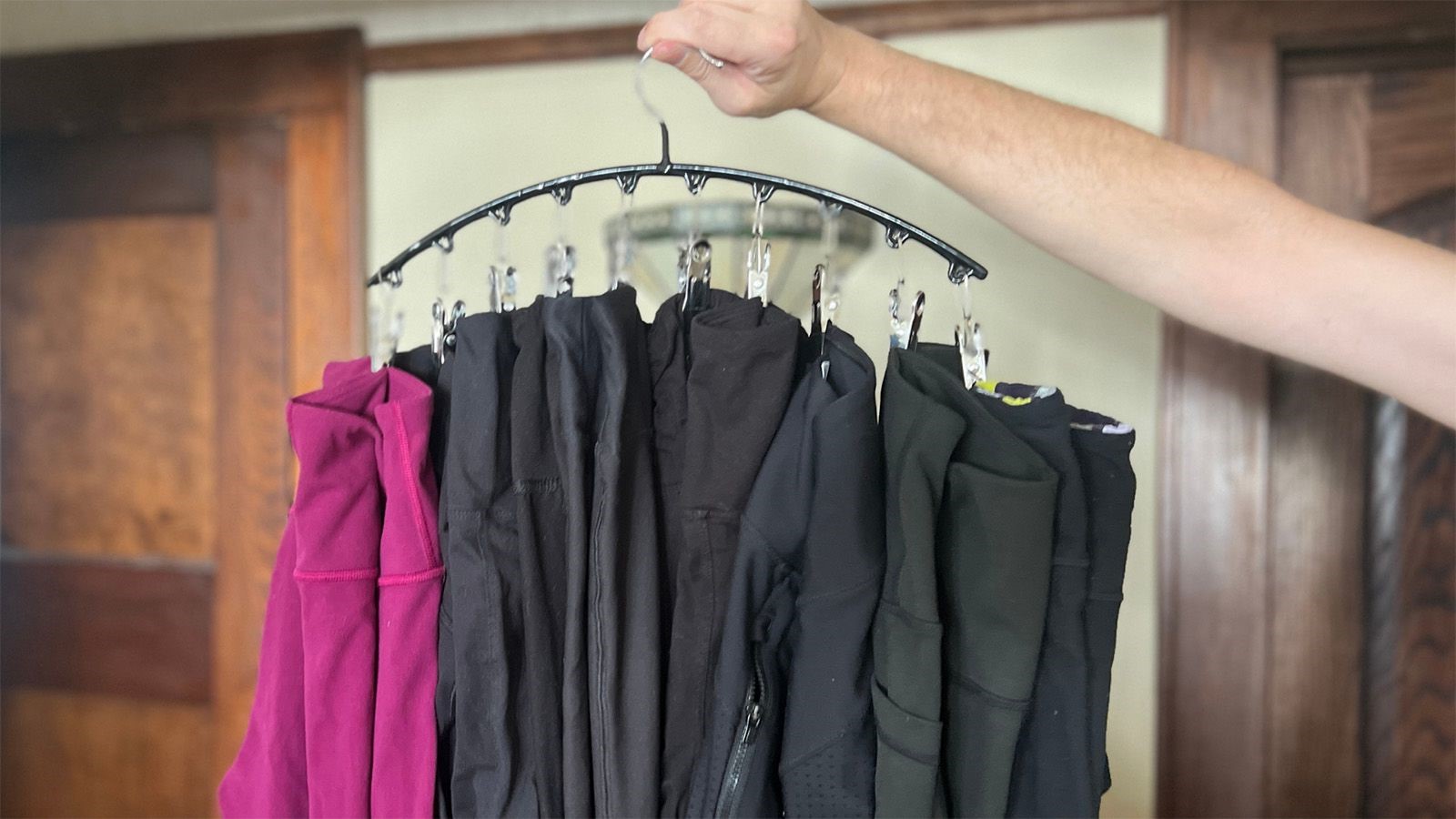Home>Storage & Organization>Closet & Wardrobe Organization>How To Organize A Walk-In Closet


Closet & Wardrobe Organization
How To Organize A Walk-In Closet
Modified: August 30, 2024
Learn how to effectively organize your walk-in closet with our expert tips and ideas for closet and wardrobe organization. Maximize space and create a clutter-free, functional closet today!
(Many of the links in this article redirect to a specific reviewed product. Your purchase of these products through affiliate links helps to generate commission for Storables.com, at no extra cost. Learn more)
Assessing Your Closet Space
Before diving into organizing your walk-in closet, it's essential to assess the space you have. Take a good look at the layout and dimensions of your closet. Consider the height, width, and depth of the space, as well as any alcoves or awkward corners. This assessment will help you determine the best storage solutions and organization methods for your specific closet.
-
Measure the dimensions of your closet, including the height of the walls, the width of the shelves, and the depth of the space. This will give you a clear idea of the storage solutions that will fit best in your closet.
-
Take note of any unique features in your closet, such as built-in shelving, hanging rods, or drawers. Understanding these features will help you make the most of the existing storage options and identify any areas that may need improvement.
-
Consider the lighting in your closet. Adequate lighting is crucial for a well-organized space, so if your closet is dimly lit, you may want to invest in some additional lighting solutions.
By thoroughly assessing your walk-in closet space, you'll be better equipped to make informed decisions about how to organize and maximize its potential.
Key Takeaways:
- Assess your walk-in closet space by measuring dimensions and noting unique features to make informed decisions about storage solutions and organization methods.
- Declutter and sort items using the KonMari method, donate or discard unused items, and assess seasonal items to create a solid foundation for an organized walk-in closet.
Read more: What Is A Walk-in Closet
Decluttering and Sorting Your Items
Decluttering and sorting through your items is a crucial step in organizing a walk-in closet. It's an opportunity to assess the belongings you have and determine what to keep, donate, or discard. Here's how to tackle this important task:
-
Empty Your Closet: Start by taking everything out of your closet. This allows you to see all your items at once and makes the decluttering process more manageable.
-
Sort Into Categories: Create categories for your items, such as clothing, shoes, accessories, and miscellaneous items. As you go through each item, place them into their respective categories.
-
The KonMari Method: Consider using the KonMari method popularized by Marie Kondo, which involves holding each item and deciding if it sparks joy. If an item no longer brings you joy or serves a purpose, it may be time to let it go.
-
Donate or Discard: Be honest with yourself about the items you truly need and use. If there are items that no longer fit or are out of style, consider donating them to charity or discarding them if they are no longer in usable condition.
-
Assess Seasonal Items: If you have seasonal clothing or accessories, consider storing off-season items in a separate space to free up room in your closet.
By decluttering and sorting your items, you'll create a solid foundation for an organized walk-in closet, making it easier to move on to the next steps of the organization process.
Choosing the Right Storage Solutions
When it comes to organizing a walk-in closet, choosing the right storage solutions is key to maximizing space and maintaining an organized environment. Here are some essential storage solutions to consider:
-
Shelving Units: Installing shelving units in your walk-in closet provides a versatile storage solution for folded clothing, shoes, handbags, and accessories. Adjustable shelves allow you to customize the space according to your needs.
-
Hanging Rods: Utilizing hanging rods is ideal for keeping clothing items such as shirts, dresses, and jackets neatly organized and easily accessible. Consider incorporating double-hang rods to maximize vertical space and accommodate shorter garments like shirts and skirts.
-
Drawer Systems: Drawer systems are perfect for storing smaller items such as socks, underwear, jewelry, and belts. Opt for customizable drawer inserts to keep these items neatly separated and organized within the drawers.
-
Storage Bins and Baskets: Utilize storage bins and baskets to corral items such as scarves, hats, and seasonal accessories. Clear or labeled bins make it easy to identify the contents at a glance.
-
Shoe Racks or Cubbies: Shoe racks or cubbies are essential for keeping your footwear organized and easily accessible. Consider a combination of shoe shelves and hanging shoe organizers to accommodate various types of shoes.
-
Accessory Organizers: Incorporate accessory organizers such as tie racks, belt racks, and jewelry trays to keep smaller items neatly arranged and prevent them from becoming tangled or misplaced.
By carefully selecting the right storage solutions for your walk-in closet, you can create a well-organized and functional space that meets your specific storage needs. Each storage solution plays a vital role in ensuring that every item has its place, ultimately contributing to a clutter-free and visually appealing closet.
Use matching hangers to create a cohesive look in your closet. This will not only make your closet look more organized, but it will also make it easier to find and access your clothes.
Maximizing Vertical Space
Utilizing the vertical space in your walk-in closet is a game-changer when it comes to optimizing storage and organization. Here's how to make the most of the vertical space in your closet:
-
Double-Hang Rods: Install double-hang rods to effectively double the hanging space in your closet. This allows you to separate clothing items by category or use one rod for longer items like dresses and another for shorter items like shirts and skirts.
-
High Shelves: Take advantage of high shelves to store items that are not frequently used or seasonal, such as out-of-season clothing, luggage, or extra bedding. Use labeled storage bins to keep these items organized and easily accessible when needed.
-
Stackable Storage: Invest in stackable storage solutions such as bins, baskets, or modular shelving units. These allow you to maximize the vertical space from floor to ceiling, providing ample storage for folded clothing, accessories, and other items.
-
Over-the-Door Organizers: Make use of over-the-door organizers to store shoes, handbags, or accessories. These organizers utilize the often-underutilized space behind the closet door, keeping items visible and easily accessible.
-
Hooks and Pegs: Install hooks or pegs on the walls to hang items such as scarves, belts, or jewelry. This not only maximizes vertical space but also keeps these accessories neatly organized and prevents them from getting tangled.
By implementing these strategies, you can effectively maximize the vertical space in your walk-in closet, creating a well-organized and efficient storage system that makes the most of every inch of available space.
Organizing by Category
Organizing your items by category is a highly effective method for maintaining a well-structured walk-in closet. By grouping similar items together, you can easily locate what you need and maintain a clutter-free environment. Here's how to organize your items by category:
-
Clothing: Arrange your clothing items by type, such as shirts, pants, dresses, and outerwear. Within each category, further organize by color or season to streamline your outfit selection process.
-
Shoes: Categorize your shoes by style, such as sneakers, heels, boots, and sandals. Consider using shoe racks, cubbies, or clear shoe boxes to keep them visible and neatly organized.
-
Accessories: Separate your accessories into categories such as scarves, hats, belts, and jewelry. Utilize designated organizers or drawers to keep these items sorted and easily accessible.
-
Bags and Luggage: Group your handbags, backpacks, and luggage together. Consider using shelf dividers or purse organizers to maintain their shape and structure.
-
Seasonal Items: If you have seasonal clothing or accessories, store them in designated bins or storage containers. Label each container to identify its contents and easily rotate items as the seasons change.
By organizing your walk-in closet by category, you can streamline your daily routine and maintain a visually appealing and functional space. This method not only simplifies the process of finding specific items but also ensures that everything has its designated place, contributing to a well-organized and efficient closet.
Maintaining Your Organized Closet
Maintaining an organized walk-in closet is essential for preserving the hard work you put into the initial organization process. Here are some tips for keeping your closet in top shape:
-
Regular Maintenance: Schedule regular maintenance sessions to assess the condition of your closet. Take the time to reevaluate the placement of items, declutter any new additions, and ensure that everything remains neatly organized.
-
Return Items to Their Designated Spots: Make it a habit to return items to their designated spots after each use. This simple practice prevents clutter from accumulating and maintains the overall organization of your closet.
-
Seasonal Assessments: As the seasons change, take the opportunity to reassess your wardrobe and accessories. Rotate seasonal items in and out of your closet, ensuring that only relevant items are taking up valuable space.
-
Donate or Discard Unwanted Items: Regularly review your belongings and identify items that no longer serve a purpose or bring you joy. Donate or discard these items to prevent unnecessary clutter from building up in your closet.
-
Invest in Quality Hangers and Storage Solutions: Quality hangers and storage solutions can make a significant difference in maintaining an organized closet. Invest in sturdy hangers that support the shape of your clothing and durable storage solutions that withstand daily use.
-
Utilize Labels and Dividers: Labels and dividers help maintain the organization of your closet by clearly defining the designated spots for each item. This visual cue makes it easier to return items to their proper place and prevents items from becoming misplaced.
-
Regular Cleaning: Keep your closet clean and free of dust and debris. Regularly wipe down shelves, vacuum the floor, and dust off any surfaces to maintain a fresh and inviting closet space.
By implementing these maintenance practices, you can ensure that your walk-in closet remains organized, functional, and visually appealing for the long term. Consistent upkeep is key to enjoying the benefits of an organized closet and preventing clutter from creeping back in.
Frequently Asked Questions about How To Organize A Walk-In Closet
Was this page helpful?
At Storables.com, we guarantee accurate and reliable information. Our content, validated by Expert Board Contributors, is crafted following stringent Editorial Policies. We're committed to providing you with well-researched, expert-backed insights for all your informational needs.















0 thoughts on “How To Organize A Walk-In Closet”